Creating a captivating hot sauce label isn’t just about aesthetics—it’s about storytelling, branding, and grabbing attention in a crowded market. A well-designed label can turn curious shoppers into loyal customers. Let’s explore how to design hot sauce labels that truly stand out.
1. Build Your Brand Identity First
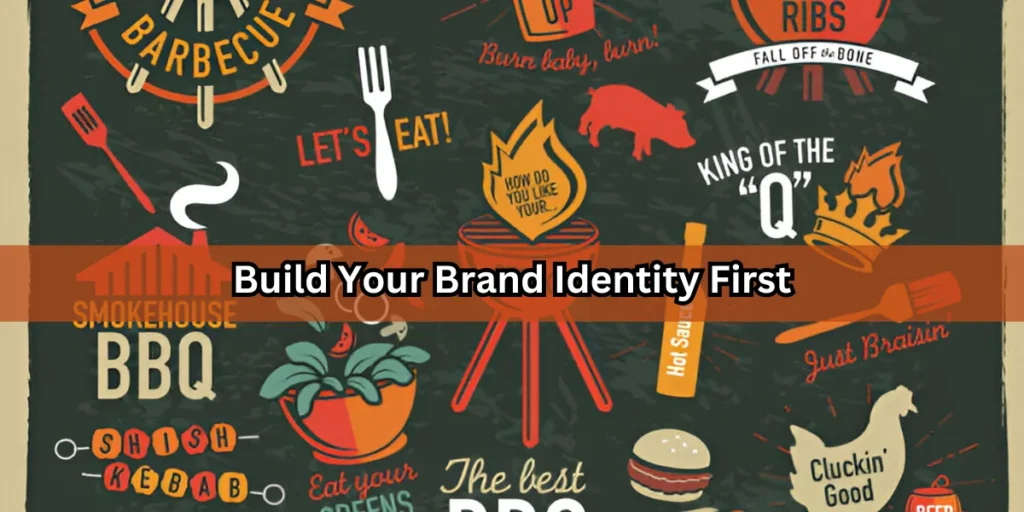
Your hot sauce label should immediately communicate your brand’s personality and promise. Whether it’s bold and fiery, artisanal and rustic, or fun and quirky, your design must resonate with your target audience.
Consider incorporating consistent elements across all your product lines, such as logos, fonts, or a distinct color palette. Iconic brands like Sriracha use recognizable imagery (a green cap and red bottle) to stand out, while Tabasco leans on its geometric label design and classic font for instant brand recall.
For small businesses or startups, sharing a brand story on the label—like a family recipe or inspiration from local culture—can build emotional connections with consumers.
2. Use Bold Colors and Shapes for Maximum Shelf Appeal
Hot sauce is inherently vibrant, and your label should reflect that. Colors like red, orange, and yellow are commonly associated with heat and spice, while green or black tones can signify milder or smoky flavors. Don’t shy away from experimenting with gradients or metallic finishes to add depth and sophistication.
Shape also plays a significant role. Unique label shapes like flames, peppers, or even rockets can make your product visually distinctive. Alternatively, opt for classic rectangular designs for a clean, professional look.
3. Make Typography and Imagery Work Together
Typography isn’t just functional—it’s part of your visual branding. Use bold, thick fonts to emphasize heat levels or ingredients, and pair them with complementary imagery, like illustrations of peppers, fire, or cultural symbols.
For example, if your sauce draws inspiration from Mexican cuisine, incorporating elements like calavera designs or Aztec patterns can enrich its visual appeal. Ensure your typography and imagery align for a cohesive design that’s both eye-catching and informative.
4. Incorporate Eye-Catching Graphics
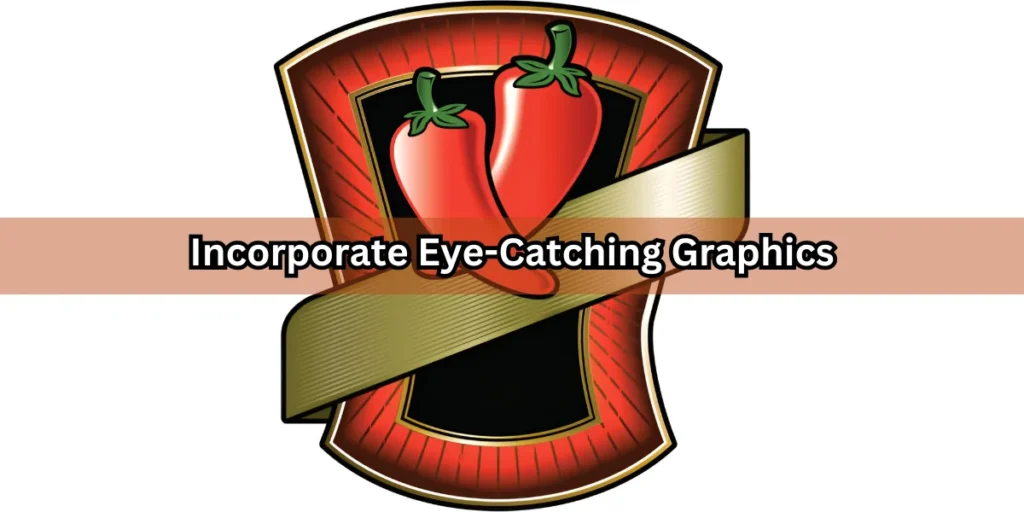
Visuals, such as fiery flames, chili peppers, or hand-drawn illustrations, can communicate flavor intensity and make your label more engaging. Subtle elements like icons (e.g., vegan or organic symbols) add value and help customers quickly identify product attributes.
5. Showcase Your Sauce’s Unique Features
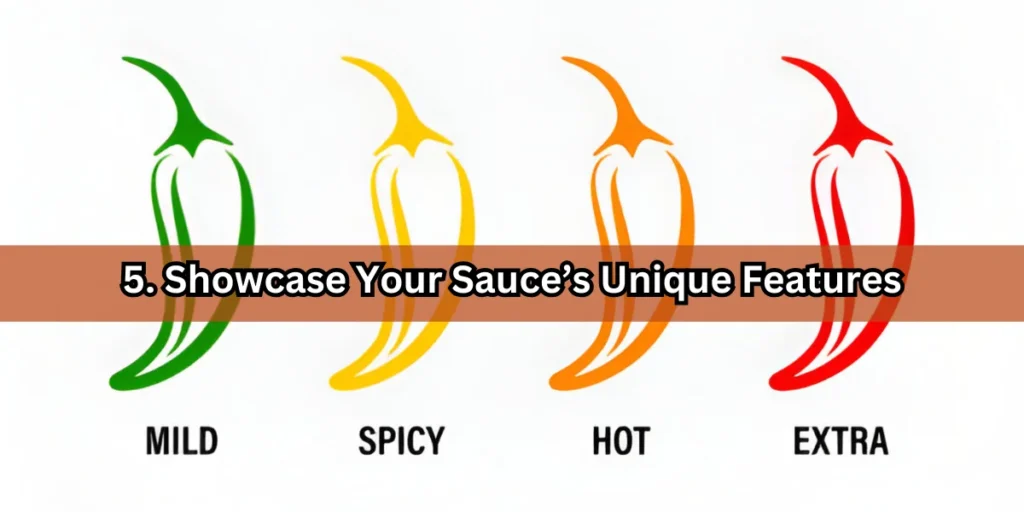
Modern consumers look beyond taste—they care about what sets your product apart. Highlight features like:
- Heat levels: Use a scale or icons to communicate spiciness.
- Flavor profiles: Add descriptions like “smoky,” “garlic-infused,” or “sweet heat.”
- Dietary benefits: Emphasize organic, vegan, or gluten-free attributes.
Providing this information upfront helps customers make informed decisions and builds trust in your brand.
6. Select the Right Material and Finish
The choice of label material impacts the overall impression:
- Gloss Paper: Makes colors pop with vibrant shine, perfect for an elegant, eye-catching look.
- Matte Paper: Offers a refined, artisanal feel suitable for minimalist designs.
- Waterproof Polypropylene: Ideal for durability in wet or outdoor settings.
- Clear Labels: Create a sleek, modern “no-label” look, letting the product shine through.
Metallic or specialty finishes can further elevate your label’s appearance, making it stand out on crowded shelves.
7. Invest in Premium Finishes and Tech Features
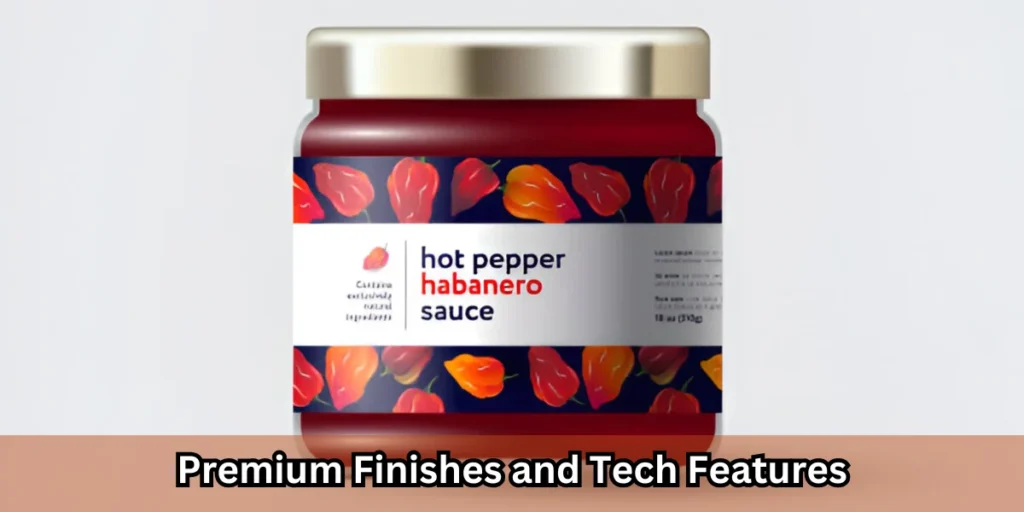
Take your labels to the next level with premium design elements:
- Foil stamping and UV coatings add tactile and visual intrigue.
- Textured prints can convey quality and artisanal craftsmanship.
- QR codes can link customers to recipes, your brand story, or promotions, creating a more interactive experience
Such details not only elevate your brand but also encourage repeat purchases by making your product memorable.
8. Test Before You Print
Before finalizing your design, print a small batch to test the label’s durability and visual appeal. Check for readability, proper alignment, and how the label adheres to the bottle under different conditions. This step helps ensure your final product is flawless.
9. Focus on Shelf Appeal
Your hot sauce label needs to stand out among competitors. Bold graphics, shiny finishes, and a cohesive design can grab customers’ attention, while the combination of creativity and functionality keeps them coming back.
10. Test Your Designs and Gather Feedback
Even the most creative label designs benefit from customer feedback. Test your labels at farmers’ markets or with focus groups to understand what catches the eye and communicates effectively. Be prepared to tweak colors, fonts, or layouts based on real-world insights.
11. Think Functionality and Practicality
Finally, a great label isn’t just attractive—it’s also functional. Ensure the text is legible, the material is durable, and the design fits the bottle shape perfectly. For instance, rectangular labels offer more space for information, while oval or round labels provide a sleek, minimalistic look.
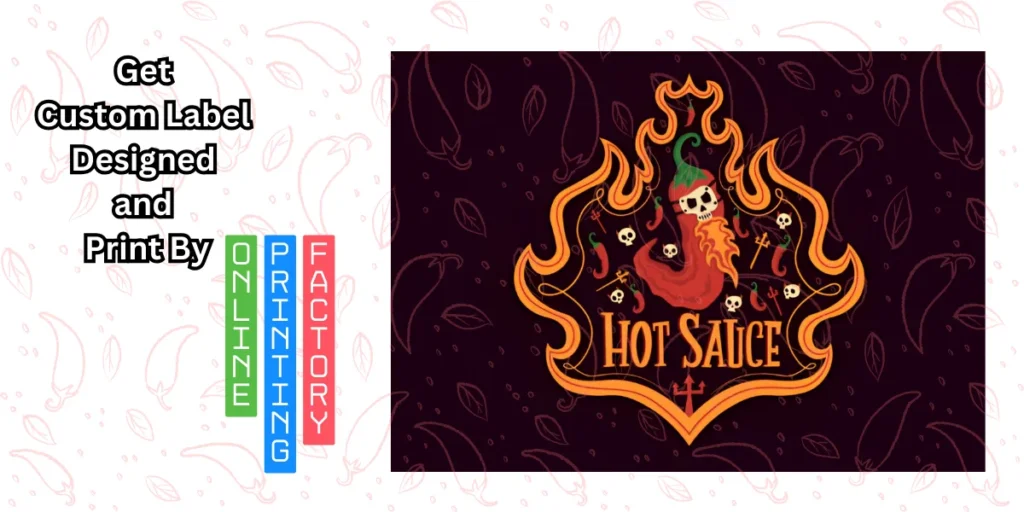
Order and design your custom hot sauce labels at OnlinePrintingFactory! Premium materials and finishes to make your brand sizzle—start now!
A sizzling hot sauce label combines bold design, clear branding, and thoughtful storytelling. From vibrant colors and unique shapes to premium finishes and informative content, each element works together to capture attention and convey your brand’s personality. With these tips, your hot sauce will stand out on shelves and in the hearts of your customers.
FAQs About Custom Hot Sauce Label Design
What information should be included on a hot sauce label?
Your hot sauce label should have the following:
- Brand Name: Prominently displayed.
- Product Name: Describe the flavor or type of sauce.
- Ingredients: Listed in descending order of quantity.
- Net Weight/Volume: E.g., “5 fl oz.”
- Nutritional Information: If applicable.
- Contact Info: Include your website or social media.
- Allergen Warnings: To comply with regulations.
- Heat Level: Represented with icons, text, or Scoville units.
What colors work best for hot sauce labels?
Vivid reds, oranges, and yellows are common as they convey heat and spice. For a premium or artisanal feel, consider darker tones like black or brown. Metallics and high-contrast color combinations can make your label pop on shelves.
What materials are best for hot sauce labels?
- Gloss Paper: Vibrant, shiny finish for indoor products.
- Matte Paper: Soft, artisanal look.
- Waterproof Polypropylene: Durable and resistant to moisture—ideal for kitchen use.
- Clear Polypropylene: Sleek “no-label” look that lets the product shine through.
How do I show the heat level on my label?
Heat levels can be displayed using:
- Icons: Chili peppers or flames, with increasing numbers or sizes.
- Scoville Units: A numerical measure of spiciness.
- Text Descriptions: Words like “Mild,” “Medium,” or “Hot.”
Can I use QR codes on my hot sauce labels?
Yes! QR codes can link to recipes, your website, or product information. This adds interactivity and value for customers while showcasing your brand.
How do I comply with legal requirements for food labels?
Follow regulations such as FDA guidelines for nutritional information, allergen declarations, and ingredient listings. Ensure all text is legible and accurate.
What tools can I use to design my hot sauce labels?
You can use design tools like Canva, Adobe Illustrator, or professional services from label providers like onlineprintingfactory to create and print high-quality labels and stickers.

